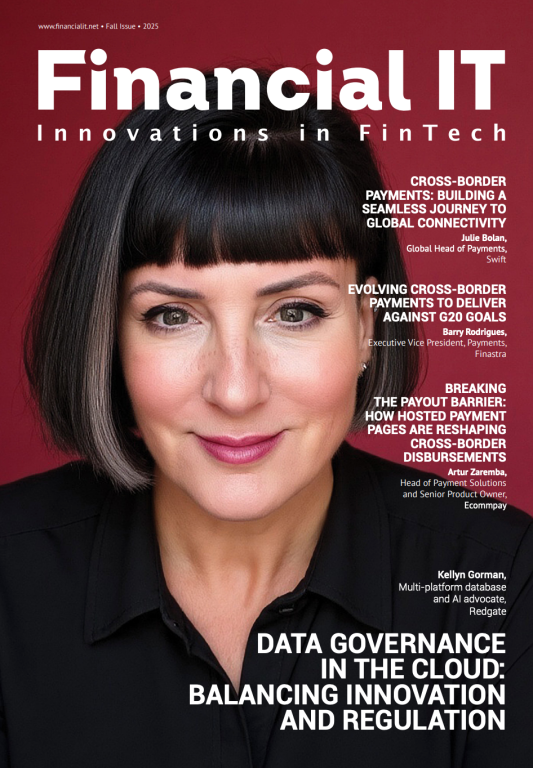How Financial Services Companies Can Tackle Model Risk Management and Fuel Innovation in the Age of AI

- Mike Upchurch, VP of Strategy for Financial Services and Insurance at Domino Data Lab
- 08.10.2025 07:30 am #AIinFinance #FinancialInnovation
There’s a tidal wave of AI-related legislation coming, and financial services companies need to figure out how to comply without slowing innovation. To paint a picture of just how rapidly new regulations are emerging, in 2023 state lawmakers introduced fewer than 200 AI-related bills. That number skyrocketed to more than 700 in 2024. Additionally, according to the Business Software Alliance, “33 states established task forces or directed existing committees to study the impact of AI on a range of policy areas.” Needless to say, highly regulated industries like financial services are at the top of the list of companies that will be impacted by these new policies.
While the regulatory wave is building, companies need to figure out how to ride it while simultaneously extracting the tremendous value available from leveraging AI. McKinsey predicts that, across the global banking sector, GenAI will “add between $200 billion and $340 billion in value annually, or 2.8 to 4.7% of total industry revenues, largely through increased productivity.” One of the most notable ways AI is making financial services companies more productive and profitable is by enabling them to generate models like never before.
Due to the incredible pace of GenAI adoption, the volume, variety, and complexity of models being built by data scientists is rapidly accelerating, and each of these models will need to surf the incoming tidal wave of regulation. This combination of rapid model development and increasing regulation creates a conundrum.
The incredible opportunity to leverage AI to create value for companies and customers will be constrained if organisations try to push an increased volume of more complex models through a model risk management (MRM) process that isn’t integrated and optimised. Building on our surfing analogy, picture a group of models sitting on their surfboards, eagerly awaiting a massive wave. Only a few get the chance to ride it, while the rest watch in wonder and frustration, admiring the wave they couldn’t catch. In the real world, this inefficiency will lead to delays in model productionisation and value realisation. These delays will also increase risks for operations, compliance, and brand reputation.
Putting more models on the wave: A unified and integrated approach to model development and risk management
One of the root causes of inefficiency in the model development lifecycle is the fragmented nature of model development and MRM processes. As an RMA study highlights, while 85% of banks centralise their MRM teams, 74% of model development happens in decentralised lines of business. This naturally creates friction, rework, and lengthy review cycles as models flow from development into MRM review, often through arbitrarily unique processes and disconnected workflows.
To frame this challenge, it’s helpful to think of the end-to-end journey—from model ideation to production deployment—as a "model-to-value" assembly line. Along this line, multiple developer teams contribute models, each facing iterative cycles of rework as the centralised MRM team identifies gaps in documentation, testing, or compliance. Applying Rolled Throughput Yield (RTY)—a concept borrowed from lean manufacturing—can help define and quantify how errors, inefficiencies, and rework compound as models progress through each stage.
Cycle time is equally problematic. Industry reports suggest that it can take 6 to 18 months to move a model from initial development into production. These delays aren’t just operational headaches—they translate to real business costs, missed market opportunities, and further prolong value realisation. Applying cycle time analysis to development and MRM processes will help financial institutions reduce bottlenecks, standardise and automate processes, and enhance real-time monitoring. It also enables parallel activities and early quality checks, significantly shortening model cycle times and improving throughput.
Performing RTY and cycle time analysis will help identify opportunities for improvement, but the path forward is not simply better project management or more meetings. Instead, financial institutions should invest in a unified platform that integrates model development, MLOps, and MRM workflows into a single system.
There are a plethora of benefits to having such a platform.
An integrated platform reduces rework by having real-time policy and compliance guardrails that can be applied during the model development process. Instead of finding errors or policy violations late in the development cycle, the platform can enforce model risk policies and validation requirements directly in the development environment. Developers get immediate feedback, reducing costly rework cycles.
By connecting developers and model risk managers on a shared platform, models don’t "leave" one team (or technical environment) and "enter" another. Instead, the model lifecycle is transparent and collaborative, allowing MRM teams to monitor development progress in real time, suggest changes early, ensure quality at every stage, and improve process yield. Additional benefits include improved communication, knowledge-sharing, and reduced misunderstandings.
Cycle time can be improved by automation of things like model documentation generation, reproducibility checks, bias testing, model drift detection, and validation reports which compresses manual tasks that historically added weeks or months to the cycle. Models move from ideation to approval to production faster and with fewer manual touchpoints.
An integrated platform creates an auditable, version-controlled environment that improves model quality and risk oversight. MRM teams gain better visibility into model assumptions, data inputs, and testing results which builds trust, ensures model quality, and improves model risk management confidence.
With a unified orchestration platform, organizations can standardise model development policies and procedures while freeing developers to choose their own tools and techniques. This supports scalable model production across lines of business without increasing risk or cycle time. Reusable components, standard workflows, and shared libraries accelerate development while maintaining compliance and reducing arbitrary uniqueness.
A surge in model volume and AI regulation is coming, and financial institutions need to find a way to ride the wave or risk getting crushed by it. Just as surfers read the water to anticipate the perfect moment to catch a wave, forward-thinking financial institutions are reading the regulatory landscape and preparing to adapt to rapid change, accelerate innovation, and simultaneously minimise risk while driving enhanced value realisation.





















